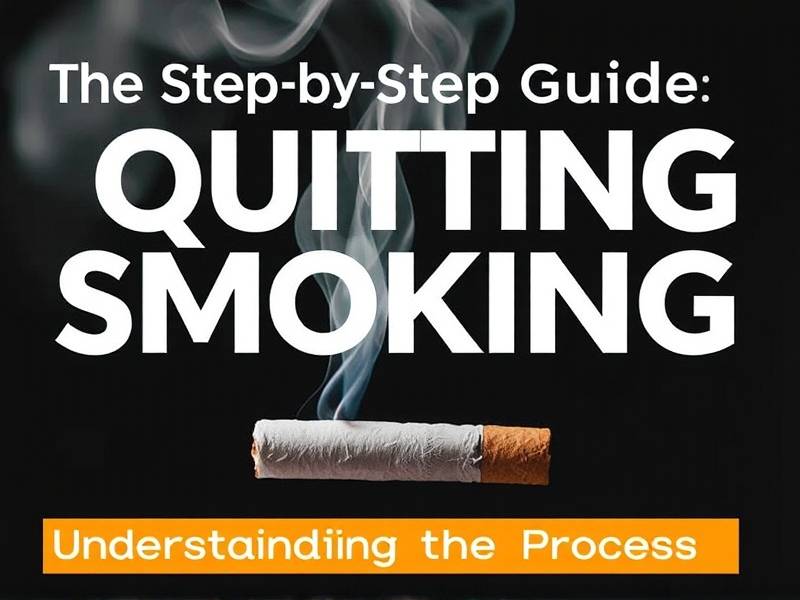The Step-by-Step Guide to Quitting Smoking: Understanding the Process
Embarking on the journey to quit smoking can be daunting, but with a clear plan and understanding of the process, it becomes more manageable. Whether you're a long-time smoker or just started, this comprehensive guide will walk you through each step of quitting smoking, providing you with the knowledge and tools to succeed.
1. Acknowledge the Need to Quit
The first step in quitting smoking is recognizing that it's time to make a change. Understand that smoking not only harms your health but also affects your wallet and relationships. Consider the benefits of quitting, such as improved health, increased energy, and financial savings.
2. Set a Quit Date
Choose a specific date to quit smoking. It's important to give yourself enough time to prepare for the journey ahead. Setting a realistic quit date ensures that you have time to gather resources and develop strategies for success.

3. Identify Your Triggers
Smoking triggers can be emotional, environmental, or social situations that make you want to smoke. Identifying these triggers helps you prepare for them and develop coping strategies. Common triggers include stress, social gatherings, or even certain smells or tastes.
4. Create a Support System
Quitting smoking is easier when you have support from friends, family, or colleagues. Share your decision with loved ones and ask them for their encouragement and assistance during your quit journey.

5. Explore Smoking Cessation Aids
There are various smoking cessation aids available that can help ease the withdrawal symptoms and cravings associated with quitting smoking. These include nicotine replacement therapy (NRT), prescription medications like varenicline (Chantix) or bupropion (Zyban), and non-nicotine medications like clonidine.
6. Develop Coping Strategies
Developing coping strategies is crucial when dealing with cravings and withdrawal symptoms during your quit journey. Some effective coping strategies include exercise, deep breathing exercises, visualization techniques, or engaging in hobbies.
7. Monitor Your Progress
Keep track of your progress by noting any changes in your health, mood, or cravings since quitting smoking. Celebrate small victories along the way to stay motivated and focused on your goal.
8. Seek Professional Help if Needed
If you find it challenging to quit smoking on your own, consider seeking professional help from a healthcare provider or counselor specializing in addiction treatment.
Conclusion
Quitting smoking is a challenging process that requires determination and patience. By following this step-by-step guide and understanding each stage of the process, you'll be better equipped to succeed in kicking the habit for good.
Remember that it's never too late to start anew – take control of your health today by taking those first steps towards becoming smoke-free!
